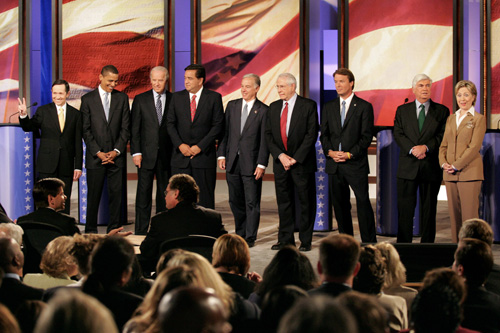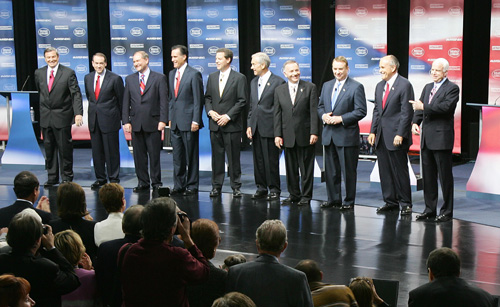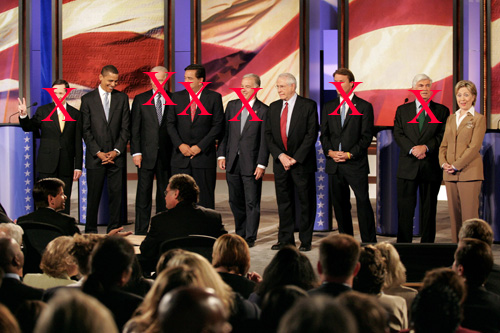Last year, when Minnesota’s political parties were considering moving their caucuses (which most Minnesotans never bothered attending) to Super Tuesday, one of the goals was to make Minnesota matter more, to be a player, to get some notice.
“It’ll give us a chance to be in the ballgame instead of sitting in the stands,” said GOP spokesman Mark Drake. “We were in danger of being left behind again, so this certainly gives us a chance to play a much bigger role.”
“It’ll boost our importance,” said DFL boss Brian Melendez.
So, how’s that worked out? Not so well.
Here’s the presidential field back around the time the move was being considered.


And here’s the field today…


In 2004, 7 Democrats were involved in the Minnesota Democratic caucus; this year there’ll be 3. Of course, in ’04 there was only one Republican on the ballot. We had more visits early on from presidential contenders than this year. And, yes, I’m including Tuesday night’s John Edwards rally in St. Paul, which he held despite already deciding to drop out of the race.
Says DFL analyst Blois Olson:
“The front-end-loaded system has also meant that it took a lot more money to be competitive. The idea that two candidates have already raised over $100 million on the Democratic side, and few candidates on either side is still eligible for public financing. People simply ran out of money, and the long campaign cycle meant they ran out of any mojo.
“Being relevant to many means getting candidate visits. We seem to be getting those. It may also mean that the outline of Minnesota is highlighted on all the stations next week. We should have moved to a Feb 5th primary, then…candidates would still be on the ballot and more than 2 percent of eligible voters would show up.”
FYI, here’s your caucus finder.
